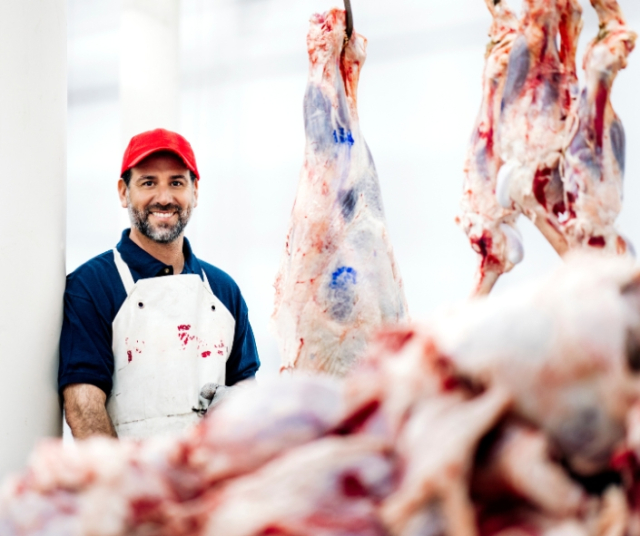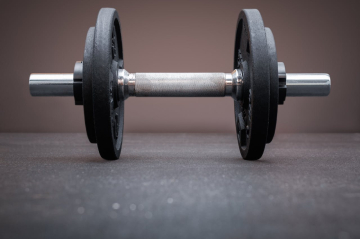Meat is a fundamental food in the diet of many cultures around the world. Since ancient times, humans have depended on meat as a source of protein, nutrients and energy. However, what often goes unnoticed are the complex processes that must occur for a piece of meat to reach our tables. From animal husbandry to processing, packaging and distribution, every step in this supply chain is crucial to ensuring the quality, safety and sustainability of the meat we consume. Join us as we explore in detail all the processes involved in bringing a piece of meat to the table, from farm to plate.
Breeding and care of animals.
The process begins on farms and ranches, where animals for meat production are raised and cared for. This involves a series of activities, such as genetic selection of high-quality animals, reproduction management, provision of balanced feed and veterinary care to ensure the health and well-being of the animals.
Genetic selection.
Genetic selection is a crucial aspect in breeding animals for meat. Breeders carefully select animals with desirable characteristics, such as rapid growth ability, feed efficiency, and disease resistance. This is achieved through selective breeding and the use of assisted reproduction techniques.
Reproduction management.
Reproduction management is important to control the animal population on the farm and ensure a constant supply of meat. This involves the control of reproduction cycles, artificial insemination and monitoring the reproductive status of the animals.
Feeding and care.
Animals intended for meat production require a balanced and nutritious diet for healthy growth. This may include a combination of grass, forage, grains and feed supplements depending on the specific needs of each species and growth stage. Additionally, clean water and access to adequate shelter should be provided to protect animals from adverse weather conditions.
Veterinary care.
Veterinary care is essential to ensure the health and well-being of animals. This involves disease prevention and treatment, vaccination, parasite control, and regular monitoring of animal health. Veterinarians can also provide advice on proper management practices and animal welfare.
Slaughter and processing in the slaughterhouse.

Once the animals reach the appropriate maturity, the slaughter process is carried out in the slaughterhouse. This step is crucial to obtaining quality meat and must be carried out in a humane manner and respectful of animal welfare. After slaughter, the meat processing process in the slaughterhouse begins.
Humanitarian sacrifice.
Animal slaughter must be carried out in a humane and respectful manner, minimizing stress and suffering to the animals. This can be achieved through methods such as electrical stunning, gas stunning, or captive bolt gun slaughter, which ensure a quick and painless death.
Cutting and processing.
Once slaughtered, the animals are cut up and processed into different meat parts in the slaughterhouse. This involves disassembling the carcass into primary cuts such as ribs, loin and legs, which are then subdivided into smaller secondary cuts. In addition, processes such as deboning, fat separation and removal of inedible by-products are carried out.
Quality and safety inspection.
During processing at the slaughterhouse, rigorous quality and safety inspection is carried out to ensure that the meat meets established health and hygiene standards. This includes visual inspection, temperature monitoring, detection of contaminants, and identification of potential public health risks.
Packaging and labeling.
Once processed, the meat is packaged and labeled for distribution and sale. This may involve vacuum packaging, packaging in sealed trays or bags, and applying labels with nutritional information, expiration date, and product origin.
Distribution and marketing.
After processing at the slaughterhouse, the meat is distributed and marketed through a network of sales channels including supermarkets, butcher shops, restaurants and local markets. This process involves a series of logistical and commercial activities to ensure that meat reaches consumers safely and efficiently.
Distribution logistics.
Distribution logistics play a key role in transporting meat from the slaughterhouse to the points of sale. This involves route planning, proper storage of refrigerated or frozen meat, and coordination of deliveries to ensure product freshness and quality.
Marketing and promotion.
Marketing and promotion are important to generate interest and demand for meat among consumers. This may include marketing strategies such as print and digital media advertising, in-store promotions, product tastings, and participation in food events.
Compliance with standards and regulations.
During distribution and marketing, various standards and regulations regarding food safety, product labeling and commercial practices must be complied with. This includes compliance with quality standards, product traceability and safety requirements to protect the health and rights of consumers.
Preparation and consumption.

Once the meat reaches consumers, it is prepared and consumed in a variety of dishes and recipes depending on individual and cultural preferences. This final step in the process of bringing a piece of meat to the table involves a series of culinary techniques and food safety practices to ensure a satisfying and healthy eating experience.
Culinary preparation.
Culinary preparation of meat can involve a variety of techniques, such as grilling, baking, frying, boiling, or braising, depending on the type of cut and the specific recipe. This may include using seasonings, marinades, and sauces to enhance the flavor and texture of the meat.
Food safety.
Food safety is essential during meat preparation and handling to prevent foodborne illness. This involves measures such as proper cleaning of utensils and surfaces, safe storage of raw and cooked meat, and thoroughly cooking meat to safe temperatures to eliminate any pathogenic bacteria.
Enjoy and tasting.
Finally, the prepared meat is served and enjoyed at the table, whether at home, in a restaurant or on special occasions. This time of sharing food with friends and family is an integral part of many cultures and provides an opportunity to enjoy the unique flavors and aromas of meat in a social and welcoming environment.
The entire process of bringing a piece of meat to the table involves a series of complex and meticulous steps that require the collaboration of producers, processors, distributors and consumers. From the raising and care of animals to culinary preparation and final consumption, each stage in this supply chain is essential to guarantee the quality, safety and sustainability of the meat that reaches our tables. By understanding and appreciating the intricate processes behind meat production and consumption, we can cultivate a greater awareness of the value and impact of this important food on our lives and the world around us.






